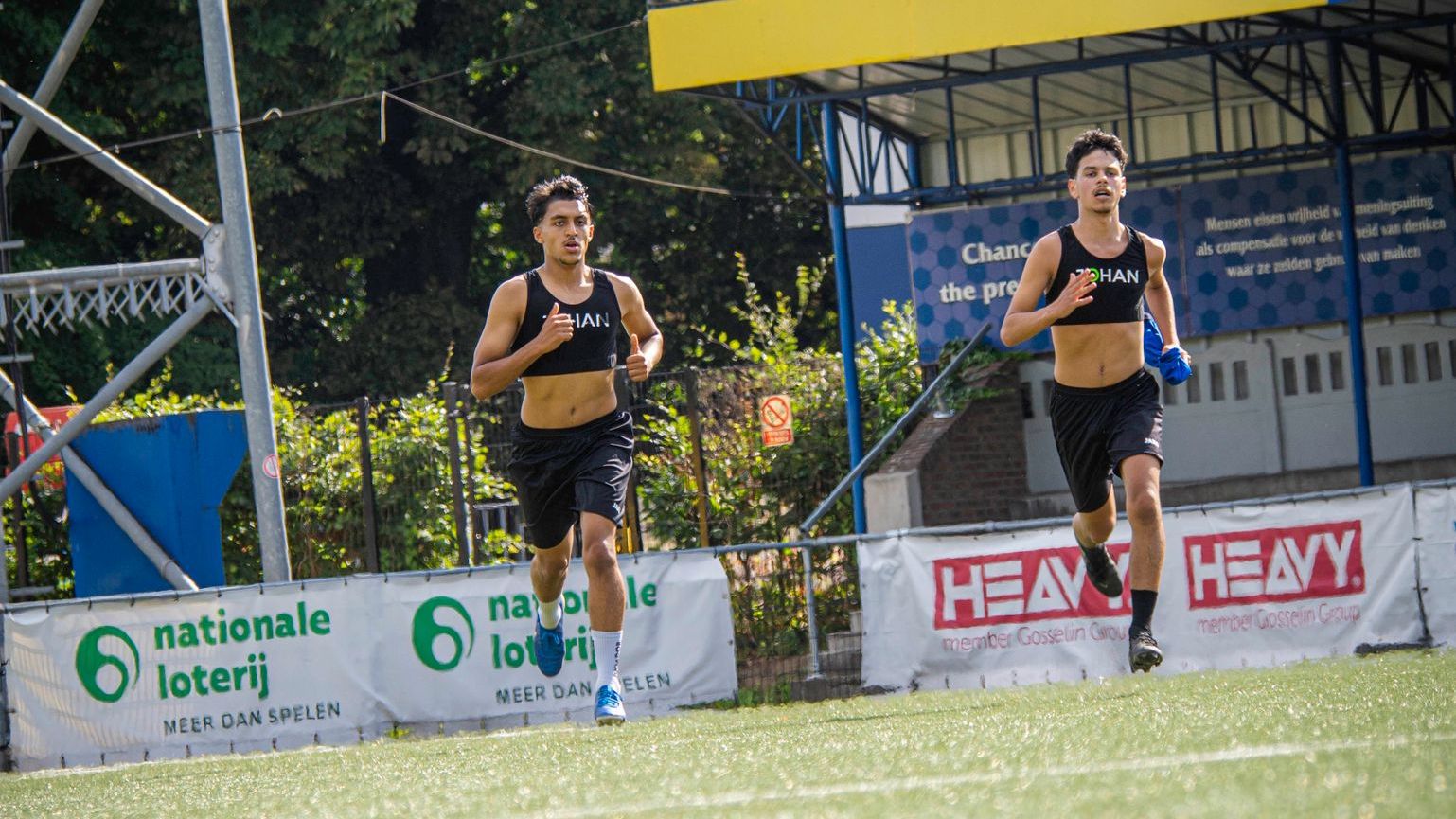Have a question or want to request a demo? Contact Johan Sports to learn more about our GPS and heart rate system for football, rugby and hockey teams.
Introduction
How do you prepare your players when you only train three times a week? Many teams struggle with intensity, recovery, and injury prevention. Here’s how to make every session count. This approach builds on the proven principles of football periodisation, such as those introduced by Raymond Verheijen, who advocates structuring training with peaks of intensity followed by recovery phases to optimize performance and reduce injury risk.
Note: This example mainly focuses on the physical component of training (intensity, recovery, and strength). In practice, coaches often integrate these sessions with technical, tactical, and mental elements to create a more complete periodisation model.
Weekly Training Focus
When working with three weekly sessions, the structure should balance performance, recovery, and injury prevention:
One intensive session – replicate match demands (high-speed running, sprints, accelerations).
One lighter session – focus on recovery, technical skills, and decision-making.
One strength & speed session – short sprints, explosive actions, and gym-based strength work.
How Johan Sports supports you
As mentioned in previous blogs, Johan Sports offers a unique advantage by combining GPS and heart rate monitoring in one device.
Together with the Johan Sports Live App, it provides coaches and physios with real-time insights into training load and player health, and translates this data into training goals.
Better balance between training and recovery
More fit and fresh players ready to perform on match day
Simple setup and scalable for every team.
Train smarter with Johan Sports
In a match, you give everything — that’s your 100%.
At Johan Sports, we measure how far you run, how often you sprint, how frequently you accelerate or decelerate quickly, and how your body responds in heart rate to these intensities.
During training, we push just beyond match intensity to help you become fitter and more resilient.
How this it work?
Match = 100%
In training sessions, we aim for:
1.8x more Total Distance
1.1x more Sprint Distance
2.2x more High Accelerations & High Decelerations
1.0x in Heart Rate Zone 5
>95% of Maximum Speed (once a week)
This training-to-match ratio approach, also explained in this blog, makes you stronger, faster, and ready for the next match — without overtraining or risking injury.
Playing positions and their training goals for football teams with 3 sessions per week.
See how much you should achieve per match, across all weekly training sessions, and per individual training — tailored to your position. The match data used in this example is based on semi-professional football teams from the 3rd Dutch division.
Note: The targets are based on averages from the 3rd tier in the Netherlands. As shown in the benchmark blog, there is variation in the statistics. Use these targets as a starting point, but always adjust them to your players.
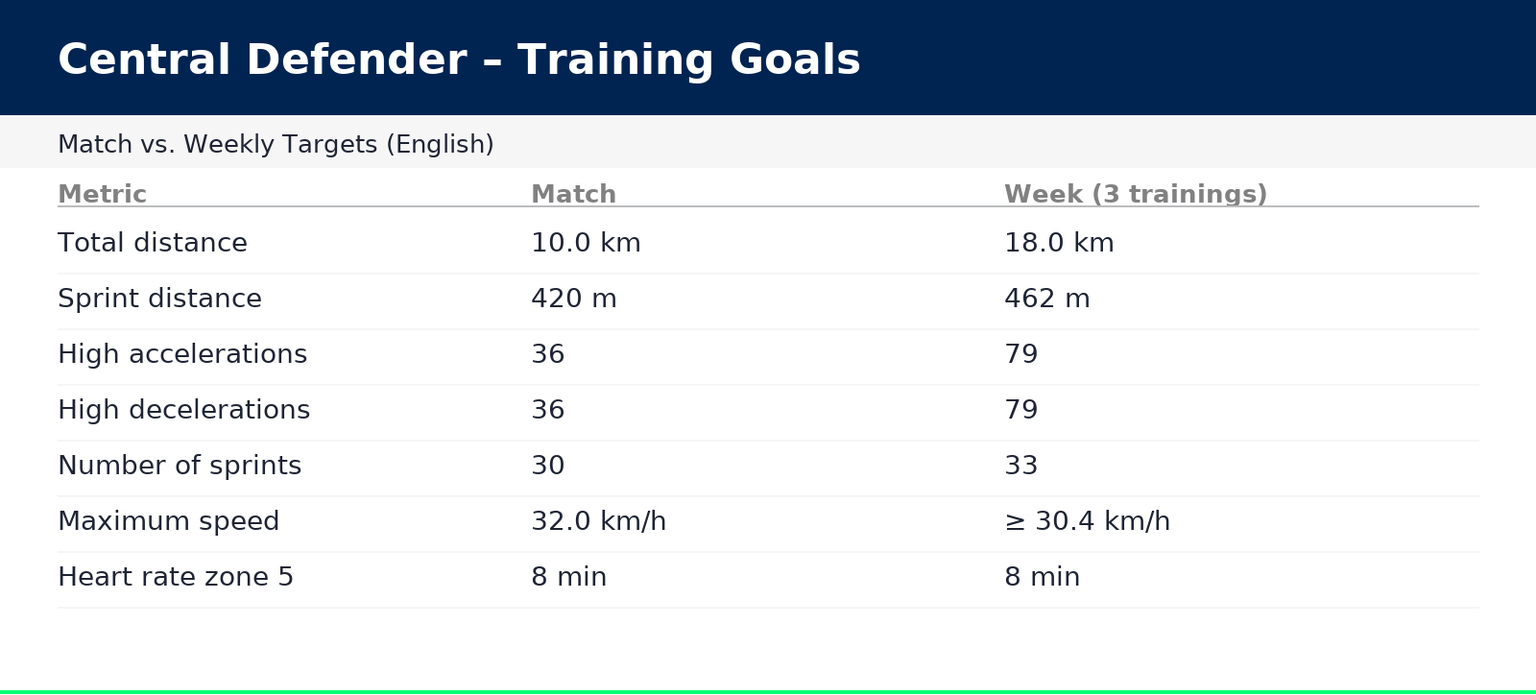
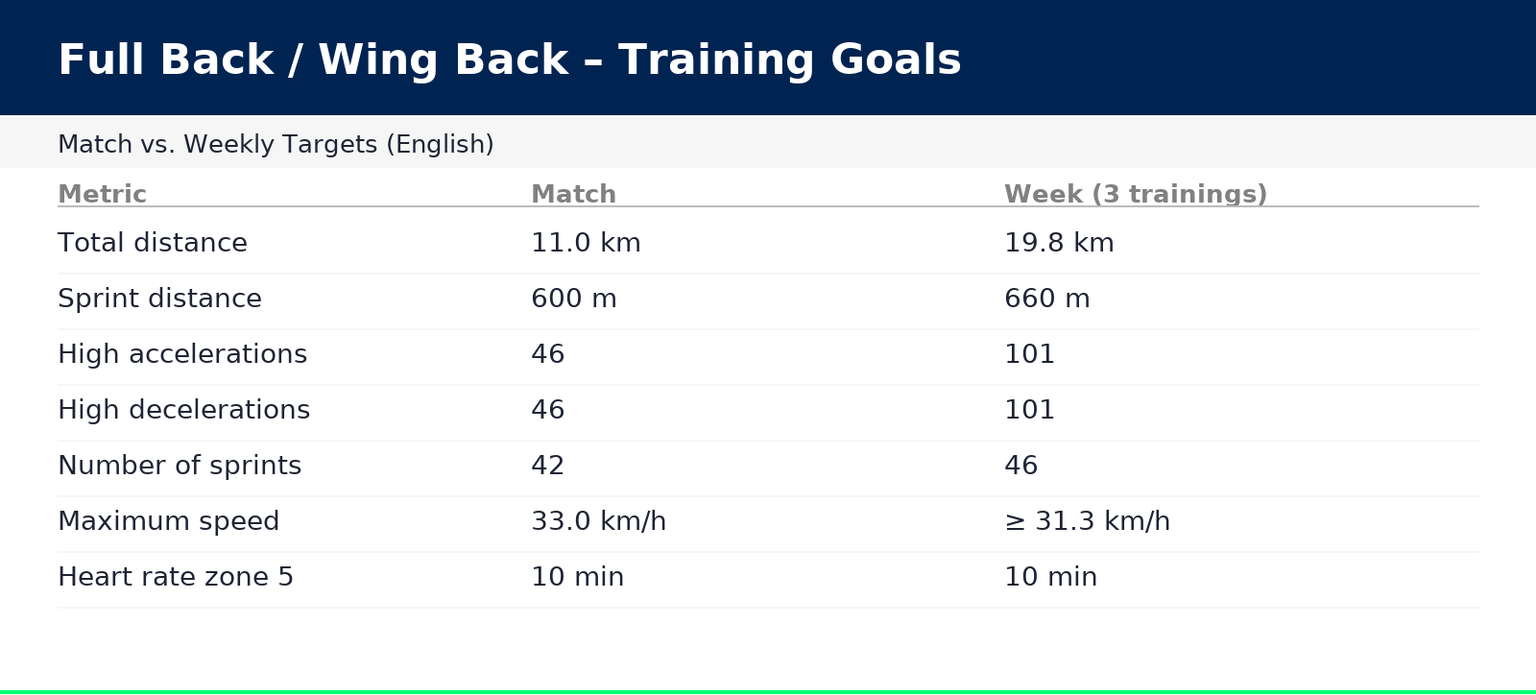
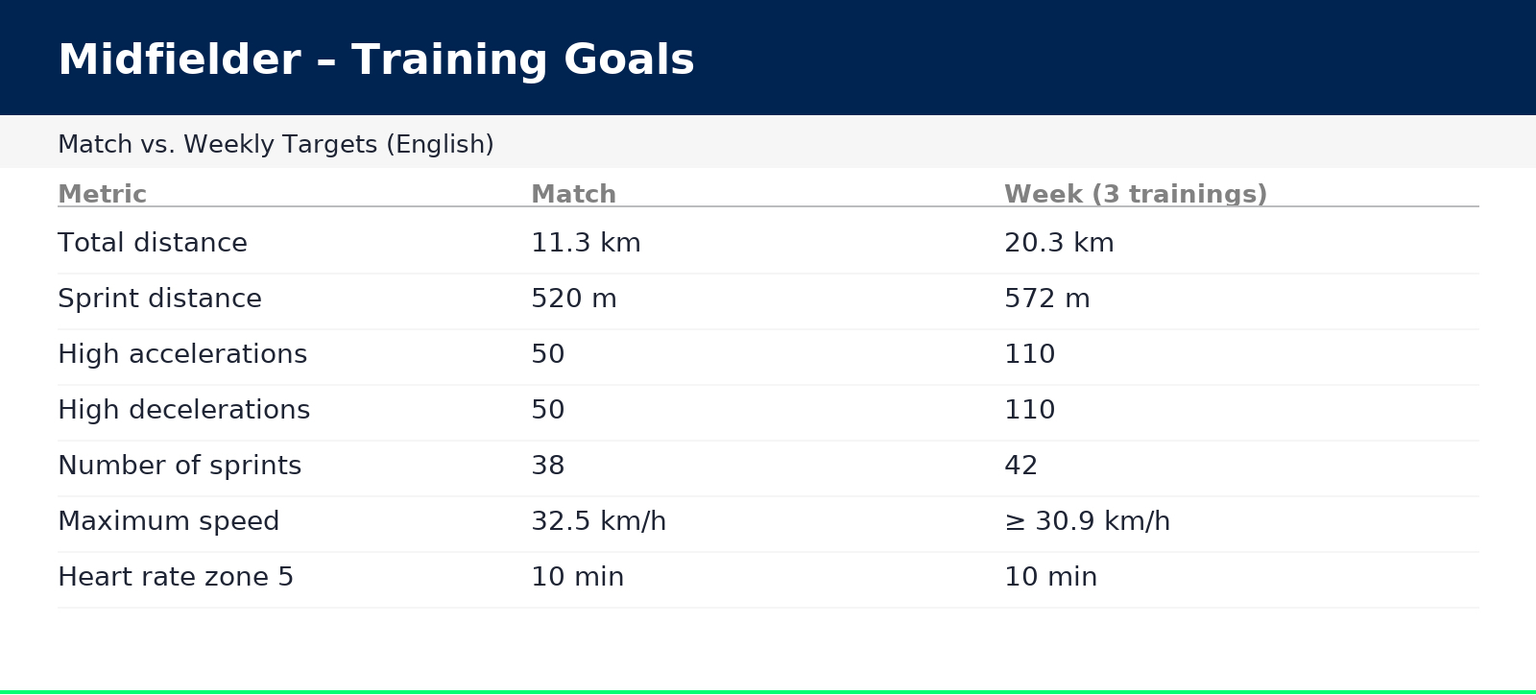
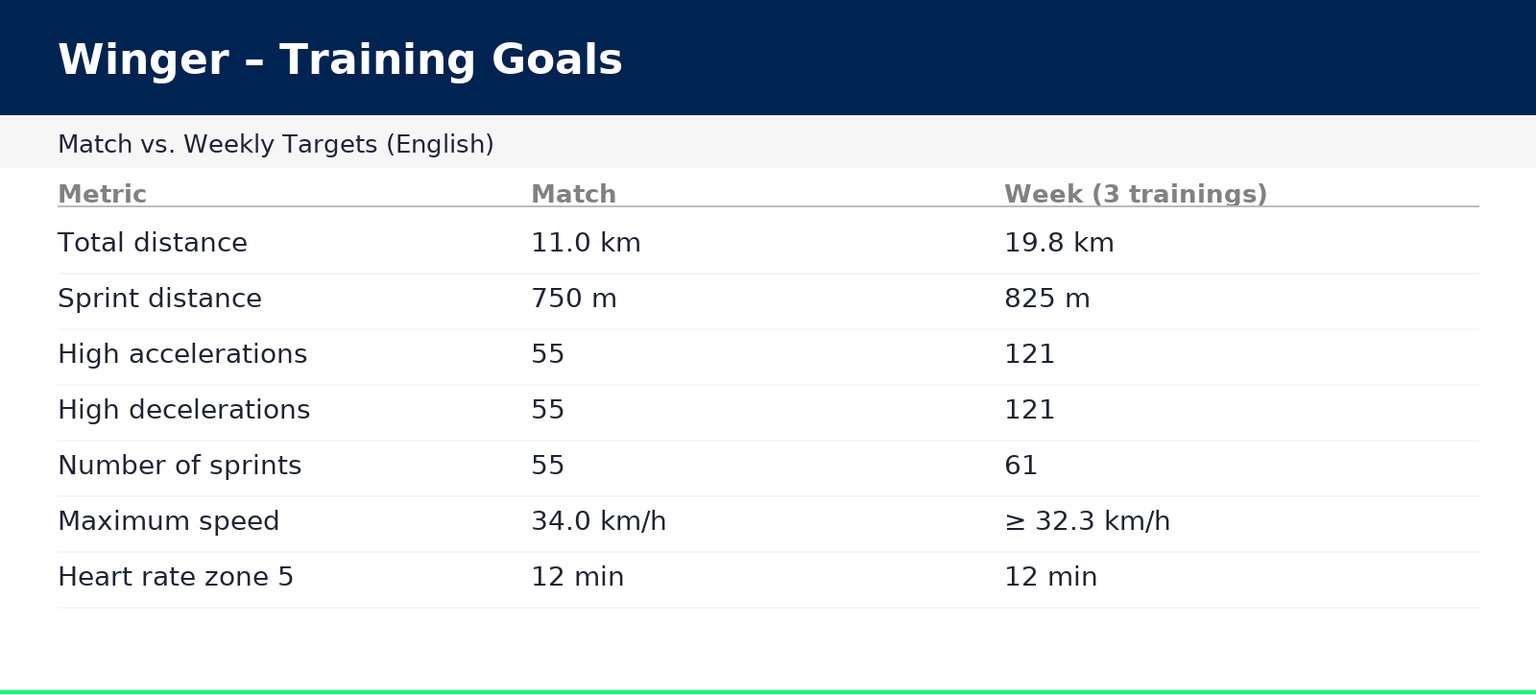
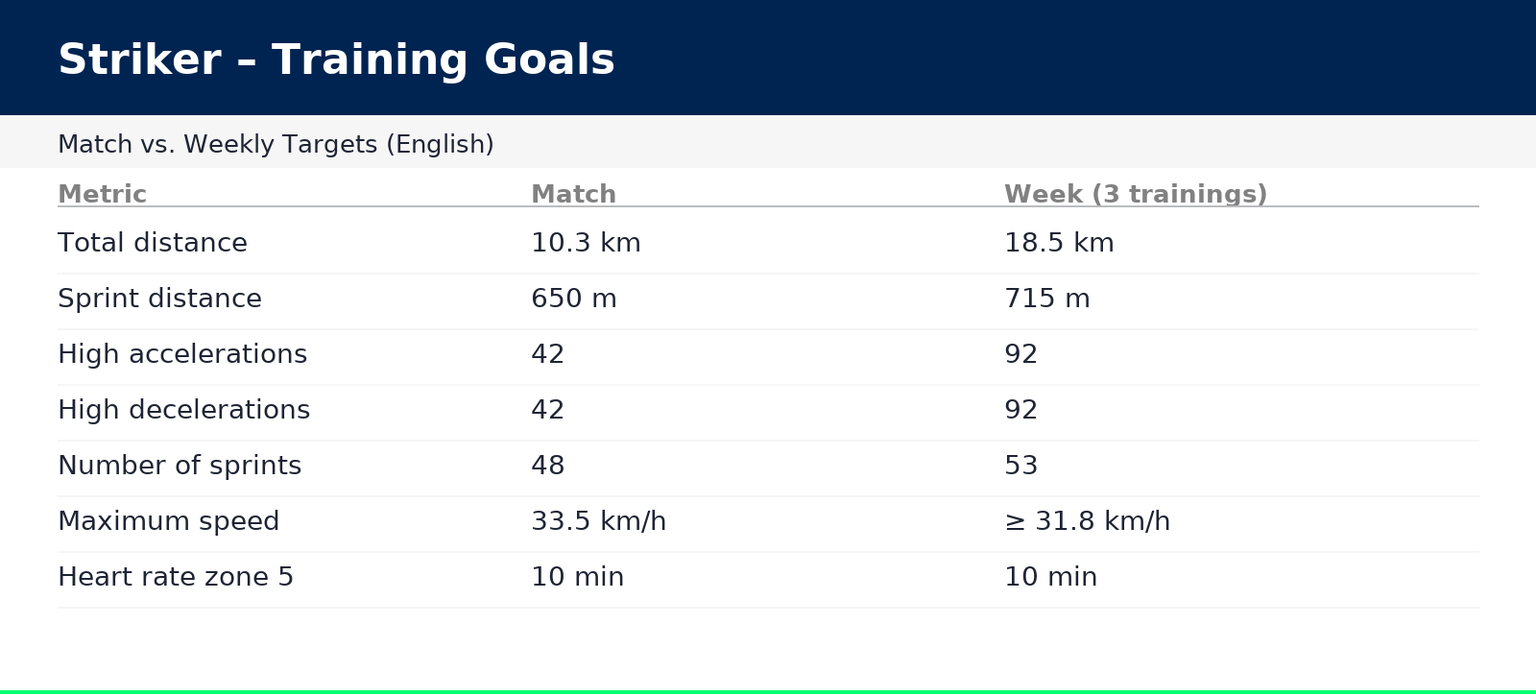
Your Weekly Schedule
Monday: easy – recovery and technique
Tuesday: hardest day – lots of distance, sprint distance (large sided games) and acceleration (small sided games)
Thursday: short and sharp – speed and tactics
Saturday: match – 100%
Smart Load Management = Better Performance
We spread the training load smartly over the week. This helps you recover well and get stronger. Tuesday is the hardest day, Thursday is short and intense.
Why 20–50–30 is a structure, not a rule for every metric
We use a 20–50–30 split to structure total weekly volume (recovery – peak – taper).
However, not every parameter follows that split. In particular, sprint distance and max-speed exposure require a different approach:
Total Distance → Mon 20% – Tue 50% – Thu 30%
Sprint Distance → Tue ≈ match level, Thu short & sharp (low volume)
Accelerations/Decelerations → peak on Tue, light on Mon, specific on Thu
HR Zone 5 → peak on Tue, brief exposures on Thu
Max-Speed (>95%) → ≥1×/week, preferably on Tue (optional top-up Thu)
Why: sprint injury risk rises with both too little and too much sprint load. Consistent weekly exposure to high speed (≥95%) improves readiness without inflating sprint volume.

Below is the calculation of weekly total distance distribution by position. Create your own target calculation per parameter for the remaining positions and enter it into the Johan Live app.This blog explains how to do it.





FAQ
Do players always need to train in Zone 5?
No. Zone 5 should reflect match intensity, not every training session.
How can I prevent overload with only three sessions per week?
Alternate intensity: one heavy, one light, and one focused on strength/speed.
Can this approach also be used for youth teams?
Yes, but always adapt the load to the players’ age and developmental stage.
Do you as a coach or trainer want to experience the impact of a fully optimised training week?
Contact us today to explore the benefits of a free one-month trial.

References:
Ammann, T., et al. (2023) Training and match load ratios in professional soccer – should we use player- or position-specific match reference values?
Silva, R., et al. (2024) Acceleration and deceleration demands of different soccer training drills and competitive matches.
Silva, R., et al. (2022) Acceleration and deceleration demands during training sessions in football: a systematic review.
Modrić, T., et al. (2021) Relative Training Load and Match Outcome.
